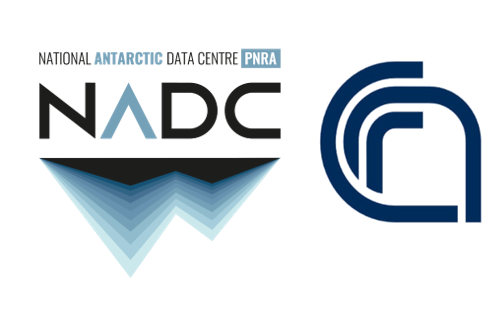FIRCLOUDS - Far Infrared Radiative Closure Experiment For Antarctic Clouds
The main goal of the project is the identification of well-characterized case studies aimed at a radiative self-consistency experiment of ice clouds and in mixed phase on the Antarctic Plateau, as well as the improvement of current spectral patterns in the far-infrared region. This can be achieved through the synergistic use of various measurement instruments operating in different bands of the electromagnetic spectrum and installed at the Concordia base, particularly at the Physics shelter. The infrared radiation emitted by the atmosphere and clouds is measured by the Fourier transform spectroradiometer REFIR-PAD (Radiation Explorer in Far Infrared - Prototype for Applications and Development) operating at Concordia since 2012 inside the DoCTOR PNRA project by Dr. Giovanni Bianchini ( https://www.pnra.aq/it/project/330/dome-c-tropospheric-observer-osservatorio-troposferico-dome-c ). The position and phase of clouds is estimated by the backscattering and depolarization LIDAR active since 2008. The particle size distribution can be estimated by an ICE- CAMERA, i.e., a kind of optical scanner that collects precipitating ice crystals on the shelter roof. As of the 2018-2019 campaign, a 24 GHz weather radar (Micro Rain Radar, MMR) operating continuously has been installed on the roof of Physics, which can provide an estimate of the precipitation rate of ice crystals and the falling velocities of those crystals. From these measurements, efforts are also being made to estimate the ice content in the case of precipitating ice clouds. Finally, during the last 2019-2020 campaign, a HALO-CAMERA was also installed, which can provide an estimate of the shape of ice crystals that can be used as a priori information in transfer models radiative suitable for simulating the effect of clouds.
In order to complete the radiative closure (or self-consistency) experiment, the idea is to use the values of the parameters of the precipitating ice clouds, i.e., optical thickness and effective diameter, obtained from the inversion of the spectra produced by REFIR-PAD, to characterize the size distribution of the ice crystals and use the latter to calculate the reflectivity at the MRR radar wavelength, i.e., 24 GHz. The calculation of reflectivity obviously depends on the type of particles (habit) that are assumed, so the inversion procedure of the spectra produced by REFIR-PAD is repeated assuming different types of particles, thus using different optical property databases depending on whether aggregates, bullet rosettes, hexagonal columns, platelets or hollow columns are used. Consequently, the same habit assumptions will have to be made for the calculation of radar reflectivity. The reflectivity obtained can at this point be compared with the experimental reflectivity measured by MRR. Data analysis was carried out by Dr. Alessandro Bracci of ISAC-CNR and Giacomo Roversi of Ca' Foscari University of Venice, both belonging to the group led by Dr. Luca Baldini. Unfortunately, the very small size of the crystals at Concordia, due to the extremely low temperatures and very low humidity values, make it difficult to detect many of these crystals. For this reason, an initial work involved precisely the selection of optimal cases that could be analyzed. The work appears to be still in progress although positive results have already been obtained from the retrieval products of REFIR-PAD, which have allowed the estimation of the reflectivity at 24 GHz, which has been compared ,in the cases of best radar signal, with that measured by MRR obtaining a good agreement. The backscattering signal allows to derive the top and bottom elevations of the cloud to be fixed in the simulation of the radiative transfer. The depolarization signal makes it possible to discriminate the presence of ice, as water droplets do not produce depolarization signal.
The lidar data, along with halo-camera and ice-camera data, are provided by Dr. Massimo Del Guasta.
Simple
- Date (Creation)
- 2018-04-12
- Identifier
- PNRA16_00189/A2
Identifier
- Purpose
-
Study of radiative properties of ice and mixed clouds in Antarctica
- Status
- On going
-
Continents, countries, sea regions of the world.
-
-
Antarctica
-
-
GCMD - Providers
-
-
IT/PNRA
-
-
GCMD - Science Keywords
-
-
CIRRUS CLOUD SYSTEMS
-
ATMOSPHERIC RADIATION
-
ATMOSPHERE
-
-
PNRA project
-
-
FIRCLOUDS PNRA16_00189
-
-
GCMD - Instruments
-
-
Spectroradiometers
-
-
NASA Thesaurus
-
-
far infrared radiation
-
- Keywords
-
-
GCMD - Locations
-
-
EAST ANTARCTIC CONTINENTAL SHELF
-
ANTARCTICA
-
-
GCMD - Platforms
-
-
GROUND-BASED OBSERVATIONS
-
- Use limitation
- Creative-Commons CC BY-NC-SA 4.0
- Spatial representation type
- Text, table
- Denominator
- 1
- Metadata language
- English
- Character set
- UTF8
- Topic category
-
- Climatology, meteorology, atmosphere
))
- Begin date
- 2016-11-15
- End date
- 2023-12-31 Now
- Unique resource identifier
- WGS84
- OnLine resource
- FIRCLOUDS - PNRA project ( WWW:LINK-1.0-http--link )
- OnLine resource
-
Associated PNRA project: DOCTOR
(
WWW:LINK-1.0-http--link
)
Data of spectral radiances acquired by REFIR-PAD spectroradiometer are the responsibility of DoCTOR project (PNRA16_00228) by Dr. Giovanni Bianchini
- Hierarchy level
- Dataset
Domain consistency
Conformance result
- Date (Publication)
- 2010-12-08
- Explanation
-
This data set is conformant with the INSPIRE Implementing Rules for the interoperability of spatial data sets and services
- Pass
- Yes
- File identifier
- ca61e577-0270-472e-aa4f-6e97c3b1d426 XML
- Metadata language
- English
- Character set
- UTF8
- Hierarchy level
- Dataset
- Date stamp
- 2025-05-12T14:20:58
- Metadata standard name
-
ISO 19115-3
- Metadata standard version
-
1.0
Overviews

Spatial extent
))
Provided by
